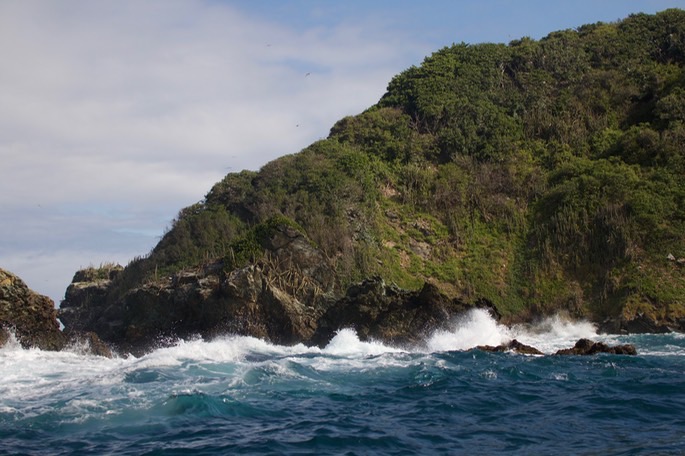Where do I put the Caribbean Islands? I have opted to place them with South America, but that is arbitrary and perhaps a bit capricious. In the case of Trinidad and Tobago, which are only a few miles off the coast of Venezuela, it is fitting both geographically and because their flora and fauna are akin to that larger region.
I have been to the islands on three occasions. Each of my visits was a little over two weeks in duration. I have explored the islands fairly well, except for the south coast of Trinidad.
For birders and naturalists, Caligo Ventures has established a stable circuit which includes two locations on Trinidad (the Asa Wright Nature Center and Mt. Plaisir Lodge) and Tobago (Cuffie River Nature Retreat and Blue Waters Inn). Two of my trips to the islands have been through Caligo, but not on birding tours. Caligo offers independent travel support which includes all of the logistics and lodging arrangements for a trip to any/all of the lodgings mentioned above. On my last trip to Trinidad I witnessed nesting Leatherback Turtles at Mt. Plaisir.
Photographs of the bird species from the islands can be found at: Birds of Trinidad and Tobago (452 photographs of 95 species). I have also established a photo gallery of other photographs from the island at: Trinidad and Tobago.
My video of bird species from these islands is found at: Bird Videos - Trinidad & Tobago.
During the first two weeks of April (2018), I returned to Trinidad & Tobago for the third time. This time, Rebecca joined me and I promised her a “birding lite” experience. None of this before dawn to after dusk, and a bit of midnight, birding stuff - nope, this would be a soft trip. I really wanted to show her the islands.
Our trip started with a seven-hour delay in our flight out of El Paso and a forced overnight in Houston, but United Airlines was on-time the rest of the time. (I must admit, however, that the opportunity to buy a snack on a five and a half our international flight is nowhere near what I call service.)
We booked our “independent” travel through Caligo Ventures. Their support was excellent and the arrangements they made worked flawlessly. In this context, “independent” simply means that we were not on a tour. The two of us traveled by ourselves but all of the lodging, flights, and land transport were arranged by Caligo.
We arrived in Trinidad at about 9 p.m., a driver from Asa Wright was there to transport us to the Nature Center and our trip began in earnest. This was my third visit to Asa Wright and our five-night stay proved to be up to standard, a high standard. I did video from the verandah and along the trails including a tour to the Oilbird grotto. The number of birds in the grotto was significantly less than the number I had experienced in previous visits.
We took a day trip to Caroni National Park and saw the usual array of staked out critters . On this occasion we had Masked Cardinal (recently split from Red-capped), Tropical Screech-Owl, Cook’s Tree Boa (not to be confused with the ‘other’ Cook’s Tree Boa), Boat-billed Heron, and Silky Flycatcher. We also enjoyed a flock of American Flamingos. We had seen this species a couple of years ago in the Yucatan and the other three species found in the Americas almost two decades ago in Chile. And, of course, the Scarlet Ibis fly-in. That was the purpose of the boat ride through the mangroves and it did not disappoint. Interestingly, in my three visits to the swamp to see this daily event I have yet to take a photograph I am really pleased with. Boat rides through the mangroves can be crowded but on this occasion there was the boatman, our driver, and six tourists - a much more enjoyable experience than sitting on one of the six boat benches four across.
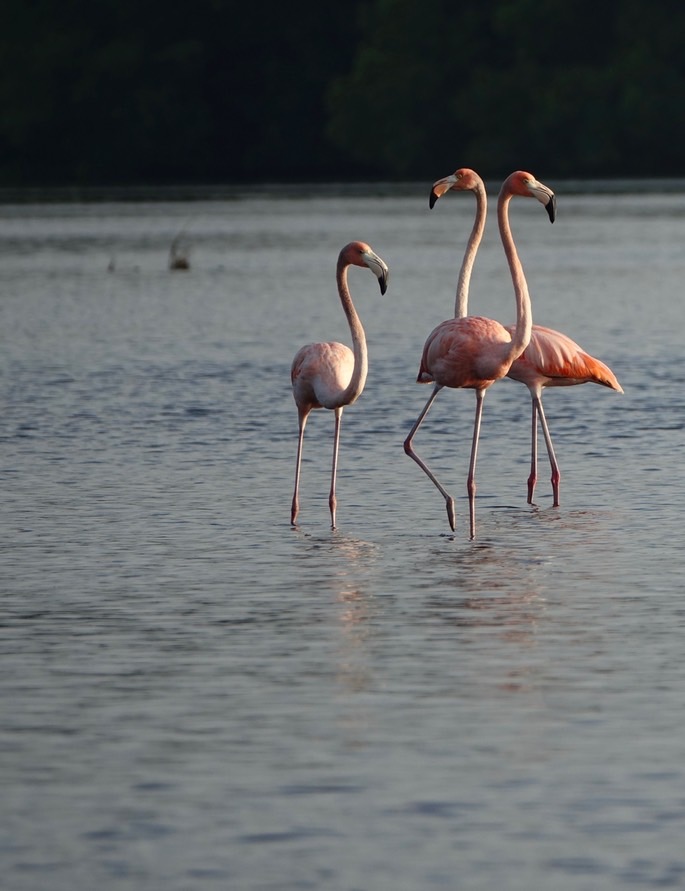
From Asa Wright we travelled to Mt. Plaisir Lodge in Grand Riviere, on the north coast of Trinidad. This was my first visit to this location. The hotel is right on the beach and the sound of surf lulls you to sleep every night. On the first morning, the hotel owner took us a short way up the road south of town to an estate with a caretaker named Peter, to see Trinidad Piping-Guan. There was a tour in the area at the time of our visit; they drove up to the site and birded from the road, while we were there. In our case, the hotel owner pays Peter a bit and we were allowed onto the grounds. Peter explained the natural history of the Guans and his efforts to (successfully) restore the population by providing suitable habitat. We spent over an hour there taking video and watching. Peter harvested coconuts for the three us and we had fresh coconut juice and meat, scraping the white manna from the shell with a bit of coconut husk.
The beach at Grand Riviere is a turtle reserve. It is possible to make arrangements to walk the beach at night with the researchers. Arrangements are made next door to the lodge. We were at Mt. Plaisir for three nights and chose to skip an outing on the first night because we would be up early for the Piping Guan the next morning. At this time of year Leatherback Turtles are coming up on the beach to lay their eggs, and the number of people on the beach can be significant. We went out on our second night there and had the beach to ourselves (and the researchers and many turtles). The turtles are massive, incredibly clumsy on land, and driven. It was a very moving experience.
Leatherbacks are impressive creatures. They can weigh up to 1,500 pounds and be seven feet long. They use their front flippers to move (very slowly) about the beach and their hind flippers to dig out the hole in which they deposit their eggs. It is my understanding that they are as graceful in the water as they are clumsy on land. Some of the turtles came ashore during the day.
Next door to the Mt. Plaisir Lodge, at the same location where you can get beach permits to watch turtles, there is a kitchen business which makes chocolate. One of the cooperative members demonstrated the chocolate making process to us, we tried a few samples, and then we were served cocoa tea (what we would call hot chocolate - but not any hot chocolate, the best that I have ever had). It was apparent that he had a canned presentation and he dutifully went through it, never deviating from the standard line even though Rebecca and I were the total “audience”. Afterward, however, we enjoyed our cocoa tea and talked with him and a cocoa grower who stopped by, at length, a great experience all the way around.
We really enjoyed the food and lodging at Mt. Plaisir - and the staff were friendly, competent, and helpful.
From Grand Riviere, we travelled to Piarco International Airport, took the short flight to Tobago, and onward by car to Cuffie River Nature Retreat. I had stayed there in January of 2016 and enjoyed it immensely. We spent three nights at Cuffie, and enjoyed the food, the birds, and the service.
During our stay I managed a good bit of video, including Common Potoo during the day - a significant improvement over the material I recorded there previously of a bird at night. I did get up one night to take photographs of the White-tailed Nightjar which is a regular at this site.
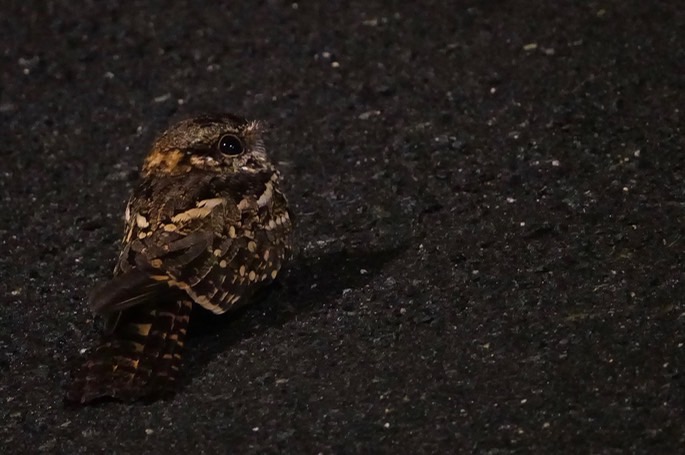
From Cuffie we travelled to Blue Waters Inn where we spent three nights. This was my third stay at Blue Waters. My first stay there was in the late 1980’s as part of my first international birding tour. At that time it was a little place on the beach, totally charming. Now it is my least favorite of the places we stayed. I find it conventional, but the rooms and food are good and it provides access to Little Tobago Island and to St. Giles Island - both to be visited!
The ride to Little Tobago Island is on a glass-bottom boat which affords some nice views of the reef around Goat Island, which lies between Blue Waters and Little Tobago. Getting on and off the boat at Little Tobago can be a bit tricky if the seas are rough - perhaps downright dangerous. On my first visit, I was enchanted by the Red-billed Tropicbirds flying by, on my second visit (in 2016) I photographed nesting Red-billed Tropicbirds, and on this visit I was able to show Rebecca both - just the two of us and a guide.
On my last visit to Tobago I took a fast boat to St. Giles Island, from Blue Waters, to see the nesting Frigatebirds and Boobies. On this trip we took a short ride over to Charlotteville and took a boat to St. Giles from there. On this trip, twins from England joined us for the ride.
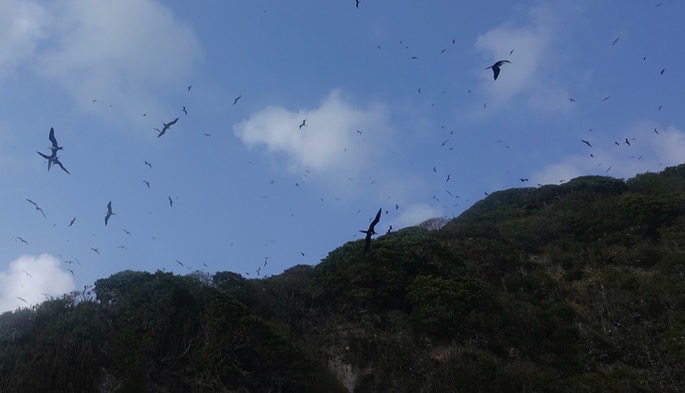
Despite some water protection a wave crashing over the front of the boat soaked me and the camera, bricking the camera. But the view of thousands of Frigatebirds soaring above and roosting on every branch of every bush and tree is a wonderful thing to remember.
Photographs from this trip are posted to the The Birds of Trinidad and Tobago and to Trinidad & Tobago. Videos from Trinidad and Tobago are posted in The Birds of Trinidad and Tobago Video Portfolio (this portfolio includes 8 compilation volumes of about an hour duration each in addition to the videos of individual species) and the Travel Videos From Around the World Video Portfolio.
In addition to the bird species videos I have published the following from Trinidad and Tobago (the title link below the video is to a larger-sized production):
To take a trip to Little Tobago Island you will most likely travel in a boat like the one pictured below. The standard tour is for an hour or so, try to arrange for a drop off and pick up and spend the day watching Tropicbirds.
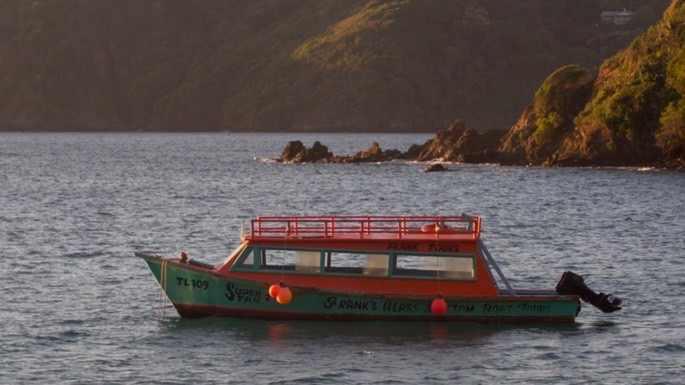
The other island of interest in this area is St. Giles Island (see video above and photograph below). To make the trip arrange for a fast boat, experience the chop of the ocean where the Caribbean meets the Atlantic, and watch Frigatebirds and Boobies by the thousands. OR Venture up to Charloteville and take a slow boat out the island.
